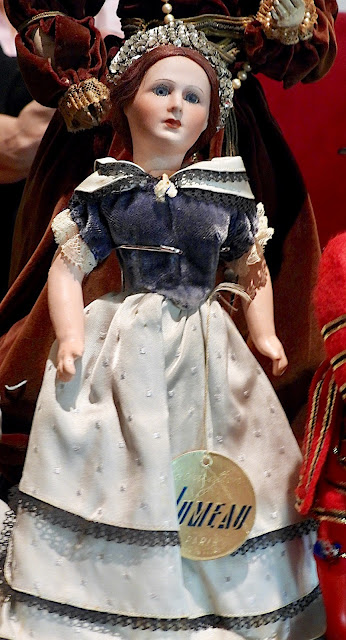Sylvia told the club that Natterer moved to Munich in 1975 and began creating her own molds and porcelain dolls. In 1982, she collaborated with the German company Zapf. Inspired by her own infant children, Natterer designed a large baby doll. In 1989, Natterer partnered with the German company Götz for the production of the Fanouche and Friends line. Sylvia stated that just prior to this, Natterer created an exclusive line of vinyl dolls, hand painted and dressed by her, for The Toy Shoppe in Richmond, Virginia. She explained that Götz agreed to this arrangement because it was seen as free publicity for the upcoming Götz collection. Natterer moved again in 1991 to a historical old schoolhouse in Tyrol, Austria, where she lives and works.
Sylvia stated that Fanouche and her twelve friends were an immediate success when they hit the market in 1990. Natterer also produced other dolls for Götz. She said that the dolls are of the highest quality, with rooted hair or wigs, hand-painted features, and finely-made clothing designed by Natterer. The dolls carry the Götz mark and Natterer's "SN" signature, and came with a certificate of authenticity. In addition to her work with Götz, Natterer designed special collectible dolls with Franklin Heirloom Dolls as well as for an Italian and a Japanese company. From 1999 to 2003, Natterer designed a line of dolls for the Spanish company White Balloon as well.
Sylvia explained that Natterer's partnership with Götz ended December 31, 2003, and the artist began working with Zwergnase to continue the Fanouche line. However, because Götz would not release the doll molds to Natterer, she had to recreate the dolls, so that the two lines look very different from each other. From 2006 to 2014, Natterer collaborated with Kruse on the Minouche line of dolls. When the Kruse company was sold in 2014, the French company Petitcollin took over production of this line.
Sylvia displayed her collection of winsome Natterer dolls.
















.jpeg)
.jpeg)
.jpeg)
.jpeg)
.jpeg)
.jpeg)
.jpeg)
.jpeg)
.jpeg)
.jpeg)
.jpeg)
.jpeg)
.jpeg)
.jpeg)
.jpeg)
.jpeg)
.jpeg)
























